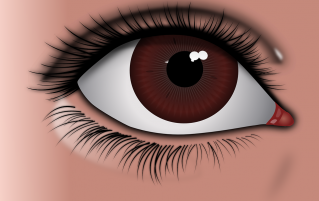

One of the Required Practicals you need to revise if you are studying AQA GCSE Physics this year, is all about light. But how much do you actually know about light and how we see?
Light travels incredibly quickly, and if you travelled at the speed of light you could travel around the Earth 7.5 times every second!! A spectrum of electromagnetic waves, all with different frequencies makes up visible light. All the colours of the rainbow make up the spectrum. Objects absorb or reflect light when it hits them. We see certain colours based on which parts of the spectrum reflect off objects and which are absorbed. A red ladybird looks red to us, because its body reflects red light, but absorbs green and blue light.
Many animals see in different ways to us. Some using one eye, some many , whereas some see in black and white and some in technicolour. Their experience of the world will be very different to ours. For example, human eyes contain 3 types of cone cells – which detect colour, whereas dogs have just two types. Their cone cells specialise to detect yellow and blue to UV light. They don’t see the world in black and white, but they are unable to distinguish between as many colours as we do. Garden snails cannot focus or see colour at all – they can only just make out a predator approaching.
On the other hand, jumping spiders can see a broader spectrum of colours than us. Some consider them to have the best vision amongst invertebrates. With their eight eyes, they have amazing vision, important for hunting and courtship. They take less than a second to jump on their prey, so accuracy is vital for them. These spiders even have pigments which are sensitive to UV light!
For help with the light practical, try our new guide “How to work with Required Practicals: Part 9 2022”. Part 9 focuses on the Physics practicals needed on both papers for AQA Physics. You will find a brief description of what you need to know about each practical, and key questions you may be asked. As always there are questions to try, and answers to check your understanding.
Click below to see the guide.
If you found this useful and think you would benefit from some additional help, please contact us.
